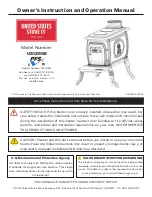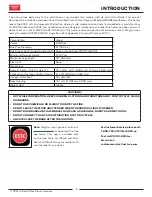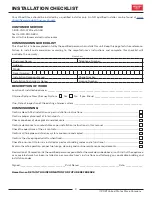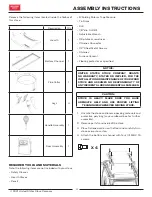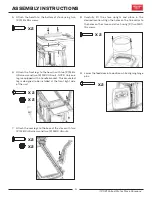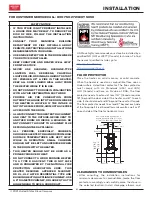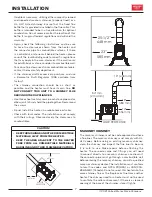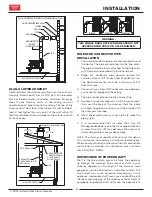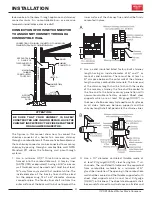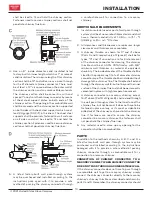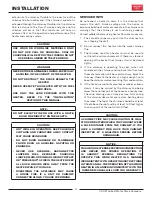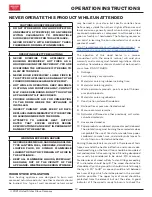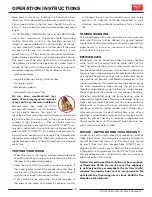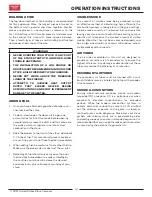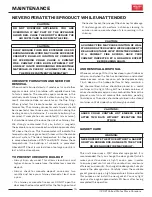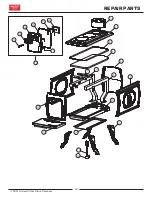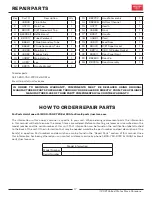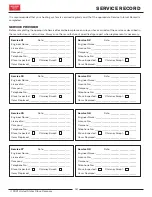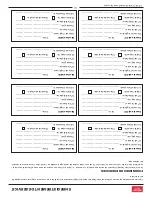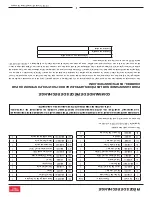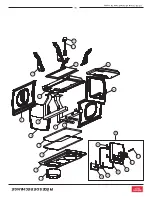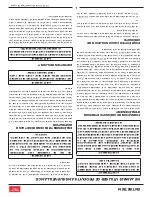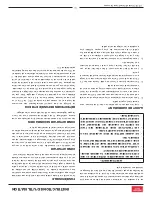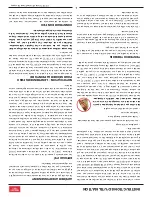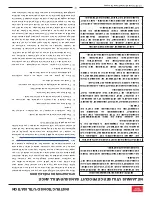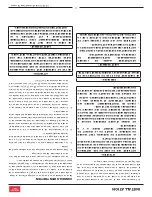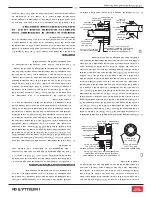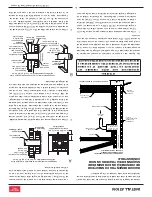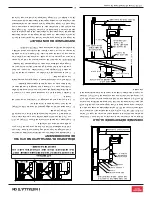
14
© 2021 United States Stove Company
OPERATION INSTRUCTIONS
BUILDING A FIRE
The top down method of fire building is recommended
for this appliance. Place the largest pieces of wood on
the bottom, laid in parallel and close together. Smaller
pieces are placed in a second layer, crossways to the
first. A third layer of still smaller pieces is laid crossways
to the second, this time with some spaces between.
Then a fourth layer of loose, small kindling and twisted
newspaper sheets tops off the pile.
WARNINGS:
• NEVER OVERFIRE YOUR STOVE. IF ANY PART
OF THE STOVE STARTS TO GLOW RED, OVER
FIRING IS HAPPENING.
• THE INSTALLATION OF A LOG CRADLE OR
GRATES IS NOT RECOMMENDED IN YOUR WOOD
STOVE. BUILD FIRE DIRECTLY ON FIREBRICK.
• NEVER PUT WOOD ABOVE THE FIREBRICK
LINING OF THE FIREBOX.
• ATTEMPTS TO ACHIEVE HEAT OUTPUT
RATES THAT EXCEED HEATER DESIGN
SPECIFICATIONS CAN RESULT IN PERMANENT
DAMAGE TO THE HEATER.
ADDING FUEL
1.
Once you have obtained a good bed of embers, you
should reload the stove.
2.
To do so, slowly open the door so it is open one
or two inches for 5 to 10 seconds, before opening
completely to increase the draft and thus eliminate
the smoke which is stagnant in a state of slow
combustion in the stove.
3.
Rake the embers to the front of the stove. Add about
7-7.5 lbs of fuel. This amount will prevent overload
or over
-
firing your stove. Close the door immediately.
4.
When adding fuel
,
be careful not to smother the fire.
Make sure the embers do not obstruct the air inlet
.
5.
Reloading of fuel should only occur once the prior
fuel load has burned down to embers. Abiding by
this routine, your stove will achieve the cleanest
emissions burn, plus will prevent
over-firing
of your
stove.
VISIBLE SMOKE
The amount of visible smoke being produced can be
an effective method of determining how efficiently the
combustion process is taking place in the given settings.
Visible smoke consists of unburned fuel and moisture
leaving your stove. Learn to adjust the air settings of your
specific unit to produce the smallest amount of visible
smoke. Wood that has not been seasoned properly and
has a high wood moisture content will produce excess
visible smoke and burn poorly.
AIR TUBES
The air tubes assembled in this unit are designed to
provide an accurate mix of secondary air to ensure the
highest efficiency. Any damage or deterioration of these
tubes may reduce the efficiency of combustion.
SECONDARY AIR TUBES
The secondary air tubes must be cleaned with a wire
brush. If debris remains in holes lightly tap with a wooden
stick to remove.
SMOKE & CO MONITORS
Burning wood naturally produces smoke and carbon
monoxide(CO) emissions. CO is a poisonous gas when
exposed to elevated concentrations for extended
periods. While the modern combustion systems in
heaters drastically reduce the amount of CO emitted
out the chimney, exposure to the gases in closed or
confined areas can be dangerous. Make sure your stove
gaskets and chimney joints are in good working order
and sealing properly to ensure unintended exposure. It is
recommended that you use both smoke and CO monitors
in areas having the potential to generate CO.

